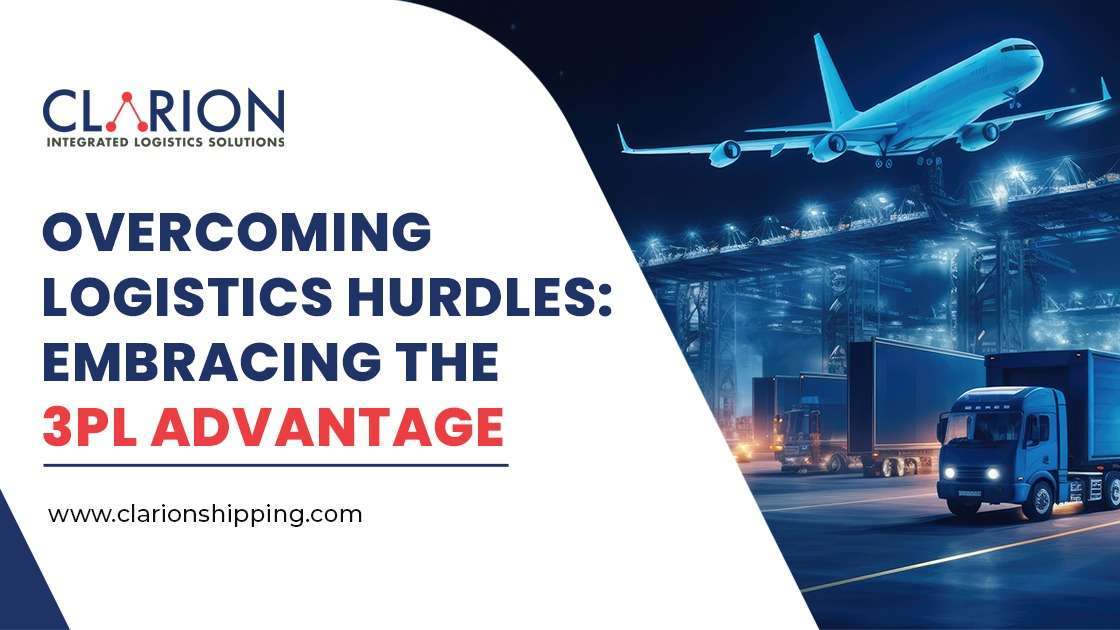
Overcoming Logistics Hurdles: Embracing the 3PL Advantage
Construction will only be deemed perfect if the foundation itself is flawless. In the realm of business, logistics forms this essential foundation. Logistics acts as a chain, interconnecting various components of the business, including inventory, warehousing, transportation, tracking, delivery, and more. The misalignment of even a single chain link has the potential to bring down the entire connection.
Logistics Challenges and 3PL Solutions
While logistics offers benefits to businesses, it also comes with its own set of challenges. However, these challenges can be effectively overcome through the efficient functioning of a Third-party Logistics (3PL) system.
A 3PL’s central aim is to serve supply chain management solutions for businesses of all sizes. Enlisting a 3PL can enhance your business by enabling you to concentrate on your fundamental strengths, leading to notable cost reductions. Let’s look at the challenges and corresponding solutions.
1. Higher Shipping Cost
Shipping to longer distances causes higher fuel consumption for transportation and the companies cover up the expense by raising the product’s rates. Often the fuel rate reaches up to 50% of the product’s value.
Solution: Through effective coordination of incoming orders, shipment consolidation, and traffic prediction, cost reduction becomes achievable. Furthermore, utilizing data analysis to optimize shipping routes allows for greater utilization of a logistics budget, leading to decreased mileage and ultimately reduced fuel consumption.
2. Seasonal Sales Fluctuations
It can be highly expensive for companies that experience seasonal sales fluctuations throughout the year to maintain warehouses and vehicles. Maintaining these facilities during a period of sales downturn can lead to significant financial losses.
Solution: Employing a 3PL provides businesses with the flexibility to utilize supply and distribution resources as required for specific situations. During periods of decreased sales cycles, there are no redundant investments depleting resources.
A third-party logistics provider (3PL) will possess the necessary tools and technologies to facilitate the expansion of your business. These include capabilities such as forecasting, precise inventory monitoring, automation, and digital warehousing, which offer vital insights for making informed adjustments.
3. Demand for Skilled workers to Manage a Global Supply Chain
It is unfeasible for small or medium-sized businesses to retain a good number of staff, imparting training to them to stay up to date with international regulatory matters, transportation, and economic rules to serve supply chain management.
Solution: Third-party logistics providers (3PLs) excel in providing comprehensive international logistics support, drawing upon decades of seasoned experience in adeptly managing the ever-evolving landscape of international documentation, customs rules, and regulations. Their proficiency ensures seamless global operations for your business.
4. Cost of Technological Investment
The expense of required technology to trace products from origin to final destination, especially in the context of global supply chains, might be too high for smaller or medium-sized enterprises
Solution: Well-established 3PLs have strategically invested in advanced transportation and warehouse management systems, essential for furnishing real-time visibility across all dimensions of your supply chain. This investment guarantees efficient monitoring and informed decision-making throughout the supply chain process.
Embracing 3PL advantages transforms the business landscape, turning challenges into opportunities for growth and efficiency. With a well-coordinated logistics chain, empowered by the insights and resources of third-party logistics providers, businesses can achieve streamlined operations, reduced costs, and a competitive edge in the global market.





